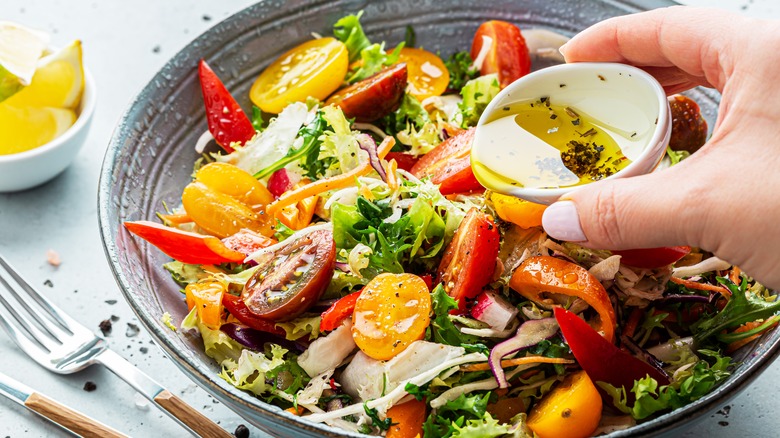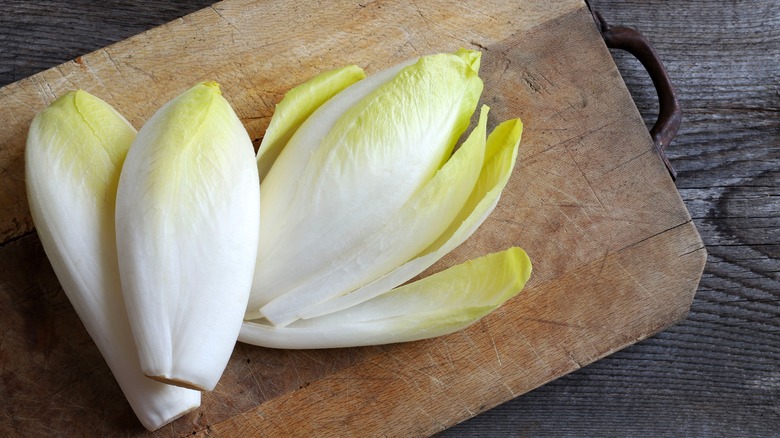Mix And Match Multiple Dressings To Seriously Elevate A Boring Salad
The dressing is an essential component of salad; choosing the right one will elevate the flavor of crisp, nutritious vegetables and other tasty ingredients you include. However, like all great things in life, two (or more) is often better than one when selecting salad dressing. Choosing multiple dressings for your salad allows you to experiment with new flavor combinations, and the variety of options means you can create as many as your mind can imagine.
Using two or more dressings also ensures your salad bursts with nuanced flavors. One selection can complement the different ingredients in the salad, while another can stand on its own to impart even more complexity. For example, combining a vinaigrette with a bolder, creamier dressing will be a joy for the taste buds. Also, using two or more dressings ensures the salad is fully covered, one key aspect of successful salad creation.
Best practices for combining multiple salad dressings
When building a better salad, one salad dressing should act as the foundation while the other will be the adornment. When selecting your foundation dressing, basic yet tasty ingredients are best for elevating the flavors of lettuce, tomatoes, cucumbers, and other veggies. In this case, focus on citrus-forward dressings and those containing vinegar. These dressings impart brightness without overwhelming the rest of the flavors in the mix.
Next comes the adornment dressing, which should be thicker and have more potent flavors. Caesar dressing, which features Worcestershire sauce, Dijon mustard, and anchovies, is a perfect way to finish your salad with a bang. Place the foundation dressing in a bowl to ensure everything is fully covered. Next, transfer the salad to a plate and add the adornment dressing to the top. This method will facilitate even coverage throughout the salad for maximum flavor.
How to pair salad dressing with different types of greens
When choosing dressings for your salad, it helps to consider the types of greens that will be on display. There's more to life than iceberg lettuce, and matching your dressings with specific greens ensures the finished salad is well-balanced and flavorful. Take kale, for instance. While highly nutritious, kale is known for having a coarse texture. In this case, choosing a citrus-based dressing will make kale a bit more toothsome and enjoyable on the palate, as the acids in citrus help temper the roughness of kale.
When it comes to endive lettuce, which is related to chicory, radicchio, and frisée, you can select something a bit more substantial. Because endive leaves are very firm, they're a perfect match for blue cheese and other cream-based dressings. As for watercress, best known for its vaguely bitter and spicy flavor profile, ranch or buttermilk dressing is an ideal selection. With these tips, you can rest assured that your next salad will be a hit on the dinner table.


